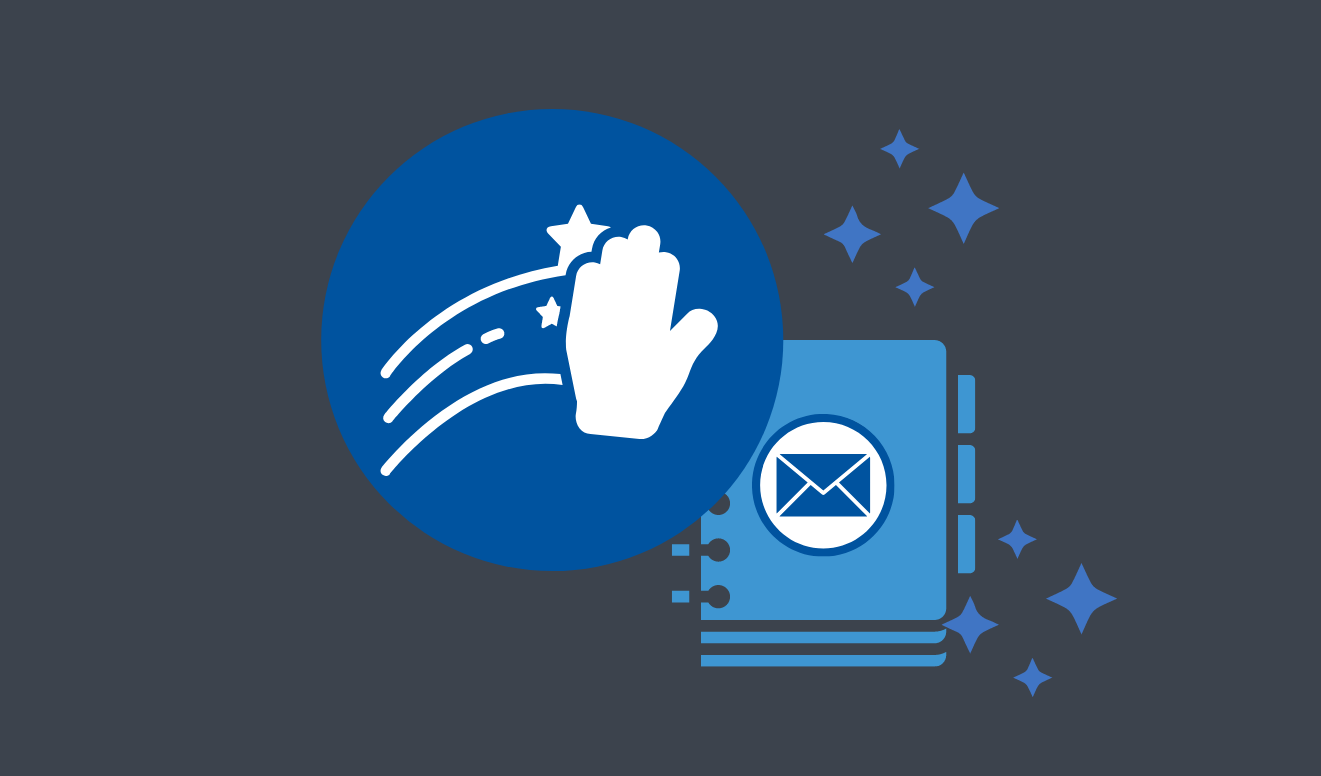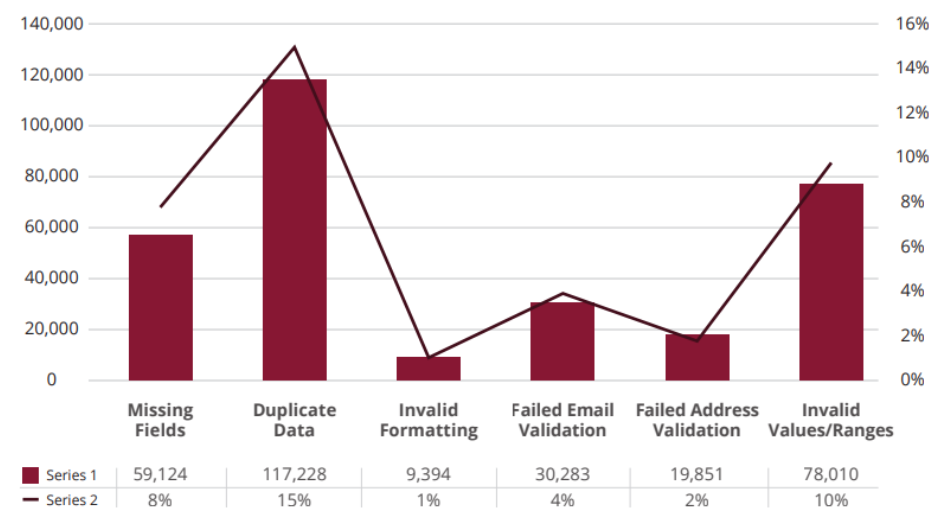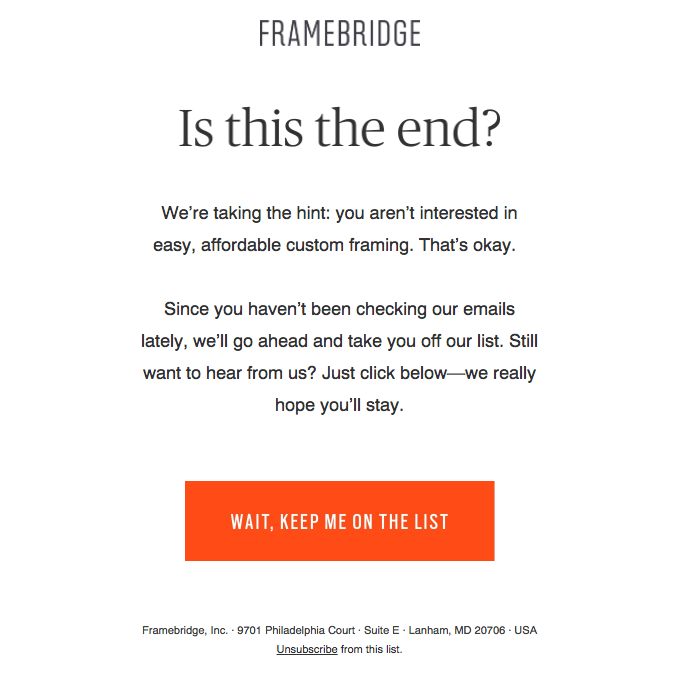Data Cleansing for Email Marketing: Your 2021 Guide

Poor data quality affects 40% of leads generated on average.
Even if you're sitting on years of customer data, you may suddenly realize that you can't personalize your upselling. You don't know who's a customer and who's a lead.
Or you may have tried to send an email campaign, and MailChimp refuses your data import.
If you're about to start email marketing (or want to get more tangible results), you'll need to get your list clean. You're likely facing the following challenges:
- You can’t segment emails or send personalized emails
- You don’t have time to manage your data
- You need to use a lot of manual workarounds
If your bad data is taking too much time and affecting the potential of your email marketing efforts, keep reading. In this post, you’ll learn:
- The ins and outs of email list management
- How to clean your email marketing list
- The best data cleansing tools out there
Data cleaning is a crucial task for email marketers. It ensures email lists are in their best shape so you have a better chance of reaching your audience with your marketing campaigns.
Cleaning data takes time. If you don't really want to do this all manually, we can clean your list for you. Contact us for a free consultation.
Clean your email list with this 15-point email hygiene checklist
Why is data cleansing important for email marketing?
There are two objectives we can consider when we talk about data cleansing.
The first is removing ‘unwanted’ contacts. These are unengaged, uninterested, and decayed contacts. The reason you want to remove these is to improve your engagement metrics like open rates or click-through rates.
If someone hasn’t opened an email for 6 months, it’s unlikely they’ll start. Continually sending emails to contacts that don’t open or engage with them can affect your sender reputation and could cause you email deliverability problems later on.
The second objective is to ensure your data is correct. This means removing any duplicates, any erroneous email addresses (caused by bad entry and typos). It can also help you spot where you may have gaps in your contact records, such as missing first names.
This allows you to improve the accuracy of your data. By removing incorrect data, you’ll get a better deliverability rate and avoid hard bounces that occur when an email address doesn’t exist.
Hard bounces are bad news because they can affect your sender reputation, which could affect your ability to continue to send bulk emails. We have an article about hard bounces that explains how to reduce them.
These data cleansing processes can also help identify gaps in your data. This allows you to improve it so that you can add detail to your customer database, helping you to send more personalized emails, or use segmentation more precisely.
Data cleansing 101
Poor email list hygiene is killing the potential of your emails.
In the graph below, you can see how different data issues are affecting lists, and it’s likely your email database contains some of these common issues, too.
Here’s what might be the root of your problem:
Data inconsistencies
Inconsistencies in data often occur when the mechanism for capturing the data isn’t consistent.
If you have multiple lead capture forms or opt-in forms, they might each collect different types of information from contacts which can lead to inconsistencies.
According to your email marketing strategy, this may have been intentional. But, it’s important that you carefully map your data fields, and keep an eye on your lists to ensure consistent data entry.
Data inconsistencies may also occur when lists are imported or merged, as you may have been collecting different contact data on different systems. It’s common to find these errors when a business starts using a new tool like Salesforce or Hubspot for the first time and imports their existing email lists.
Duplicates
Duplicates in your email database is a frequent issue for email marketers. You want to avoid potentially sending someone an email twice, or lacking a full picture of a contact because their activity or data is spread over multiple contact records.
It happens either when the same person signs up twice with different email addresses, e.g. personal and business emails, or when someone enters an email address alias. For example, Mary Smith might own both m.smith@example.com, as well as mary.smith@example.com and might have used both at different times to subscribe to your lists, or fill in a form on your website.
Incomplete data
Incomplete contact data may be an issue if you are using lead-capture forms or any other type of data collection that doesn’t require providing detail other than an email address. You are able to email the contact, but you may have no other details that can help you segment your lists, or personalize your messaging.
It may also occur when you apply different rules or processes to different sets of contacts, for example, you may have added tags to contacts who downloaded one piece of content, but not for another.
Running a data cleansing process is not just an opportunity to look at data quality. Use it as a chance to reflect on your email metrics, and drive your content marketing forward. More data cleansing best practices in 2020 here:
Improving your database requires both data enrichment and data cleansing. We wrote about the difference between data enrichment vs data cleansing to help you understand when to use either one.
Email scrubbing: warning signs to look out for
Email scrubbing is an email list cleaning process that involves deleting all the email subscribers on your list that never interact with your emails.
There are two types of email metrics found within your email marketing service that can help you identify which contacts should be removed from your list:
1. Engagement metrics
Look at your metrics and pay attention to open rates, and click-through rates (CTRs). These will tell you what percentage of your marketing emails are never being opened.
You’ll be able to create a list based on who is never engaging with your email campaigns.
When it comes to creating a clean email list with data scrubbing, we recommend you remove these contacts from your marketing campaigns (but first, send a re-engagement campaign!).
However, you don’t have to delete your contacts altogether. If you use marketing automation, use segmentation or contact suppression to remove these contacts from your email workflows, and watch your metrics improve.
2. Deliverability metrics
You should pay attention to your bounce rates. Soft bounces and hard bounces can cause issues with sender reputation and make it more likely that you’ll end up in a spam folder.
Hard bounces are particularly dangerous, this means the email is completely undeliverable and could be because the email address or email server doesn’t exist, or the recipient’s server has blocked your emails. Regularly remove hard bounces from your email contact database, and make sure to never attempt sends to them.
Soft bounces are when emails can’t get through to your recipient’s email inbox temporarily and can be reattempted. Although these aren’t as much of a concern, you should keep an eye on how they affect your metrics, and remove any repeating soft bounces.
Other types of deliverability metrics you may want to take into account are spam complaints, which is when someone marks your email as spam or being ruled out by your recipient’s email service provider as spam before you even get to their inbox. You can find out more about email deliverability here, and how data cleansing can help keep those occurrences low.
What to do before you clean your email list
Improving your data hygiene requires some forward planning. Here are the things you should do before you start to clean your list:
Audit your list
Running a data cleansing process is not just an opportunity to look at your data quality. Use it as a chance to look over the data you have, reflect on your email metrics, and drive your content marketing forward.
Ask yourself where you have seen the best conversion rates, and where you have achieved great email marketing ROI. Take your good ideas and your winning strategies and repeat.
It also allows you to plan how you will collect and use your data in the future. Do you have a lot of behavioral data? Use that to segment your next campaign. We explain how to get started with behavioral email marketing here.
Are your firmographics strong? Put it to work with personalization.
If you’ve made any tweaks or adjustments to your marketing efforts, ensure that this shapes how you manage the data cleansing process, so you can focus on what’s important for your content marketing.
Run re-engagement campaigns
As we mentioned earlier, removing inactive subscribers or anyone who isn’t interacting will help improve your engagement rates, and clear out uninterested contacts.
However, before you do that, you may find it worthwhile to run a re-engagement campaign.
This means emailing all contacts in your ‘to be deleted’ list to let them know you plan on removing them from your list unless they let you know they want to stay on the list. Here’s an example:
This could encourage some contacts to remind themselves of your content and become engaged again. Some contacts may have tracking blockers set up on their emails. This means any engagement activity on emails you send to them will not be reflected back to you in your email metrics. In this case, they might have been a keen subscriber all along, and therefore are interested in staying on your list.
You may find that it provokes contacts to unsubscribe. In this case, remove them from your list completely.
How do I clean up my email database?
There are a couple of areas you should be checking when you embark on your data cleaning process:
Contacts
Check that the information you have against your email contacts is correct. Are your email addresses correct? Are names and email addresses spelled correctly?
You can use simple filters, or sort your lists to find missing details like first name and last name, or identifiers like lead vs customer.
You may want to use a tool to validate email addresses and identify if your email contacts are real people, or spam traps. You can also search for duplicates to merge or remove additional data.
Related post: 13 Best Data Cleaning Tools For Your Customer Data
Fields
Check whether your fields are consistent both vertically and horizontally. You can do this by sorting different fields and comparing them to spot mistakes or gaps. You may find this identifies duplicates too.
Workflow
Ensuring your marketing automation is set up accurately is important. When a contact is added to a workflow, for example, when they download something, what happens when they exit the workflow? If they are being added to a list, or tags are being added to their contact record, are these consistent across all workflows?
Create procedures to organize your tags, then go through your tag fields to ensure these match up across all workflows, to give you a better understanding of how your contacts sit in their funnels.
Best data cleansing tools for email marketing
Here are our recommendations, depending on your business size and requirements:
tye
DataValidation
Bounceless
Kickbox
tye.io
We clean and enrich data, so that you can send better emails. Designed for SMBs with larger lists and teams that don’t have time to manually clean them. You just upload your data or connect your API to the software and get it cleaned immediately.
We have 4 key principles when it comes to improving your data:
Personalization. Most of our clients come to us with a goal to send more personalized email marketing campaigns. We help get your data ready so you can achieve this.
Enrichment. We fill in the gaps, so your data is detailed.
Accuracy. We ensure your data is consistent, correct, and the right information is in the right field.
Unification. We provide you with a unified view of your email lists, merging all lists together for a single, unified view.
DataValidation
DataValidation is an email verification and email list cleaning service, best for larger companies. It’s an online tool, so you just need to import your lists, and they’ll provide an email verification report, highlighting issues you need to resolve. The best feature? It allows you to download a ‘safe’ list, so you can just re-import your list, free of the unwanted contacts.
Neverbounce
Best for smaller companies or entrepreneurs that are able to manage lists manually. Neverbounce analyzes your email list quality and labels them as “valid”, “accept all”, “unknown” and “invalid”. Then, you can remove all “unknown” and “invalid” emails for your list. This is a great tool if the only thing you need cleaned is an email list.
Kickbox
Kickbox is an email verification tool, especially for marketers and developers in small to medium sized companies. They allow you to eliminate bounces and monitor your sender reputation in real-time. They are also hot on GDPR regulations, if you are concerned about emailing European contacts.
Clean data is good data, and will put you on a path to better email marketing. We’d love to work with you to help you improve your email marketing lists.
Cleaning data takes time. If you don't really want to do this all manually, we can clean your list for you. Contact us for a free consultation.
Clean your email list with this 15-point email hygiene checklist

